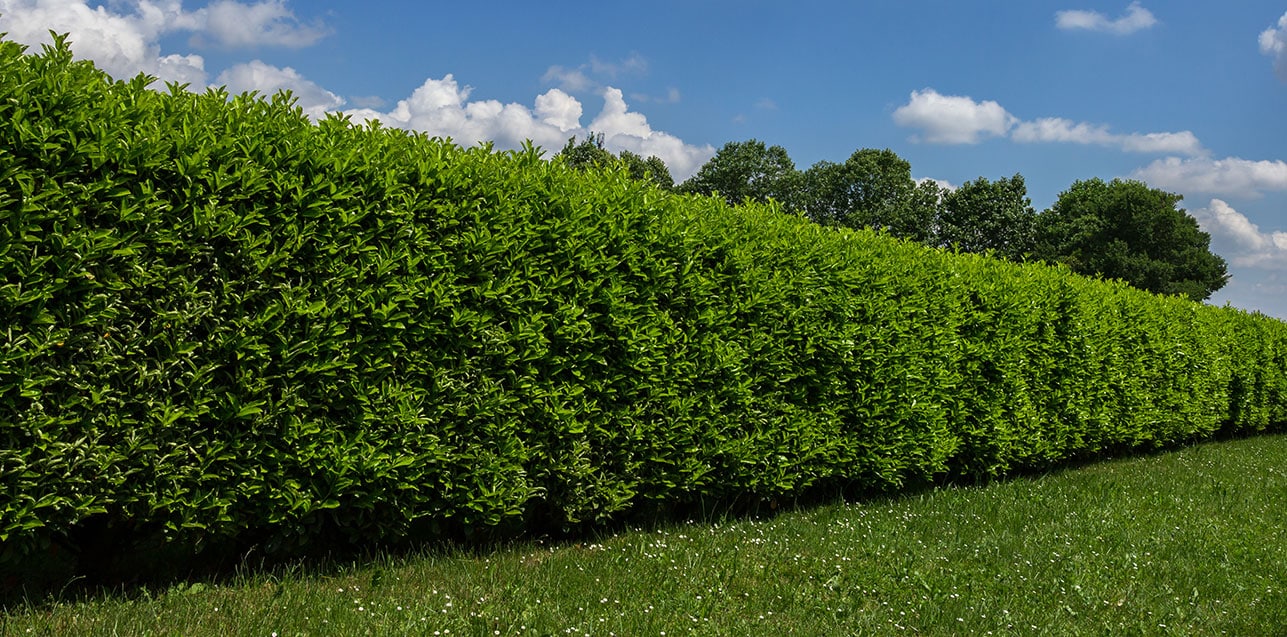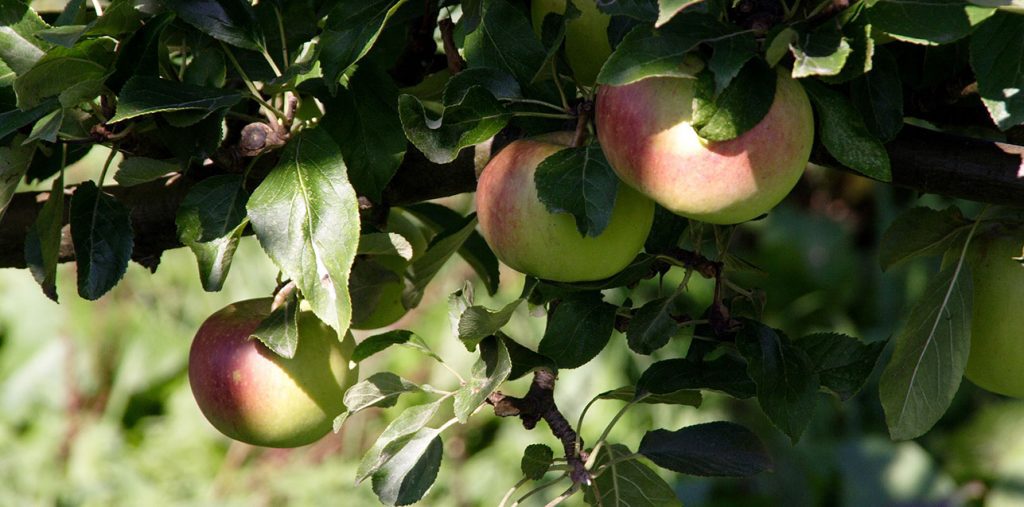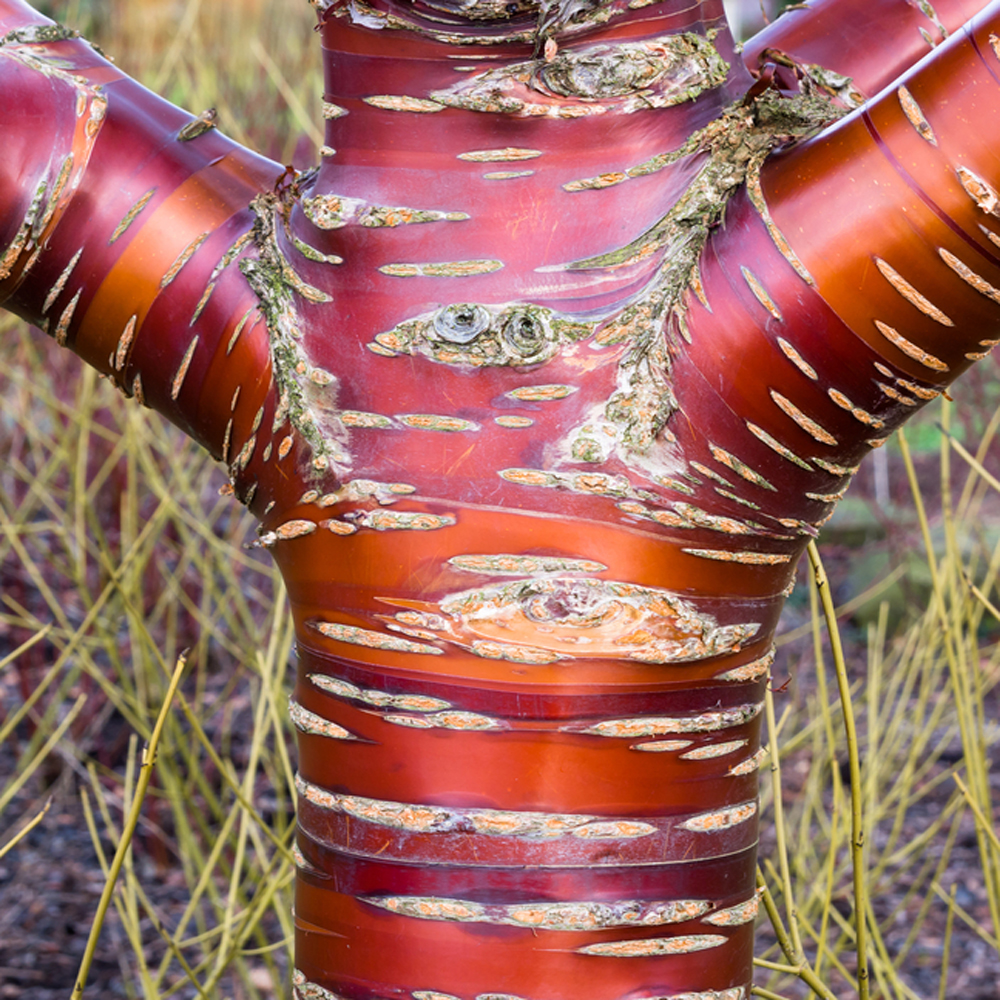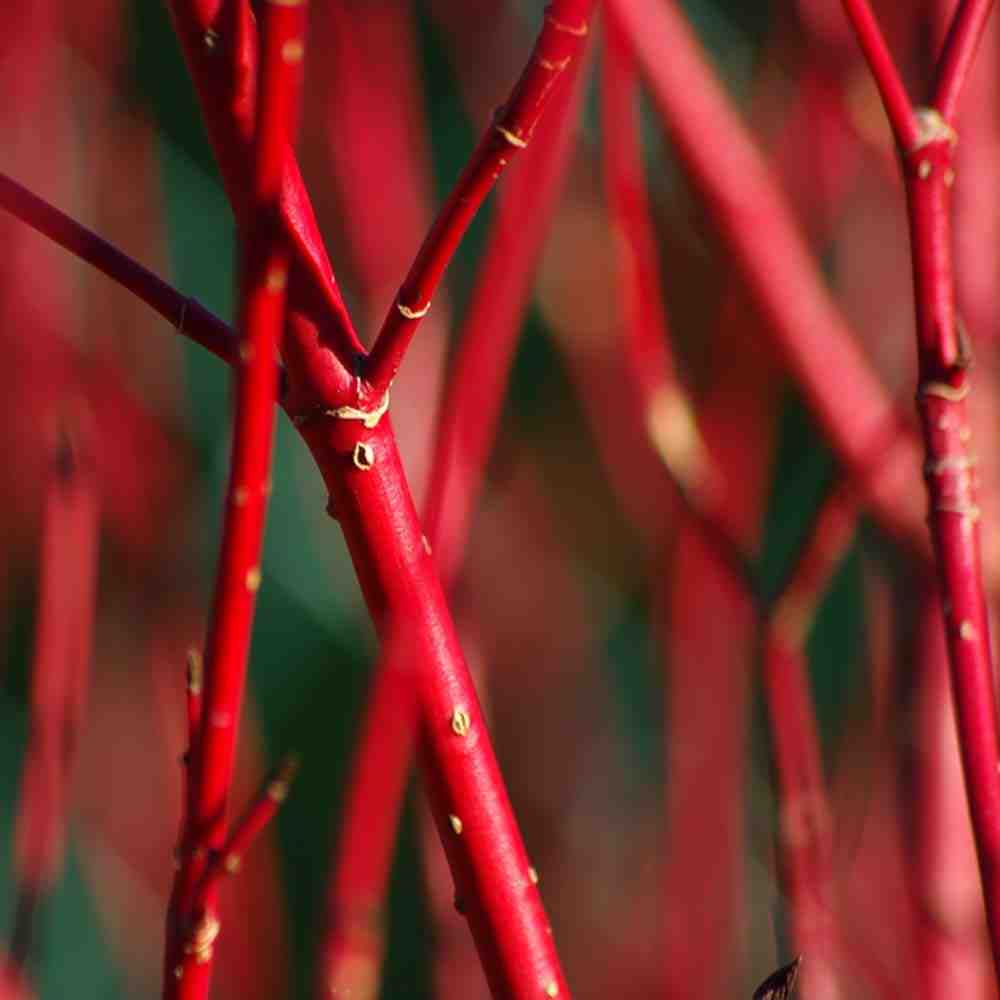As winter approaches, many plants lose their leaves and fade into the background. Planting trees for winter interest is great at this time of year as it can work to bring beauty and structure to your garden, even in the coldest months. Here are some of our picks to brighten your landscape this winter:
Tibetan cherry (Prunus ‘serrula’ Tibetica)
The Tibetan cherry is perfect for gardens that need year-round appeal and winter interest. It is small deciduous tree that stands out with its glassy, copper-red bark and pale pink or white flowers. It thrives in most soils and prefers a sunny spot.
Pink Winter Flowering Cherry (Prunus subhirtella ‘Autumnalis Rosea’)
A standout tree for winter interest. This charming cherry bears delicate white flowers brushed with pink, blooming intermittently through the coldest months. It brings welcome colour to the bleakest days. Compact and graceful with a spreading form, the Pink Winter Flowering Cherry is a must for any winter garden.
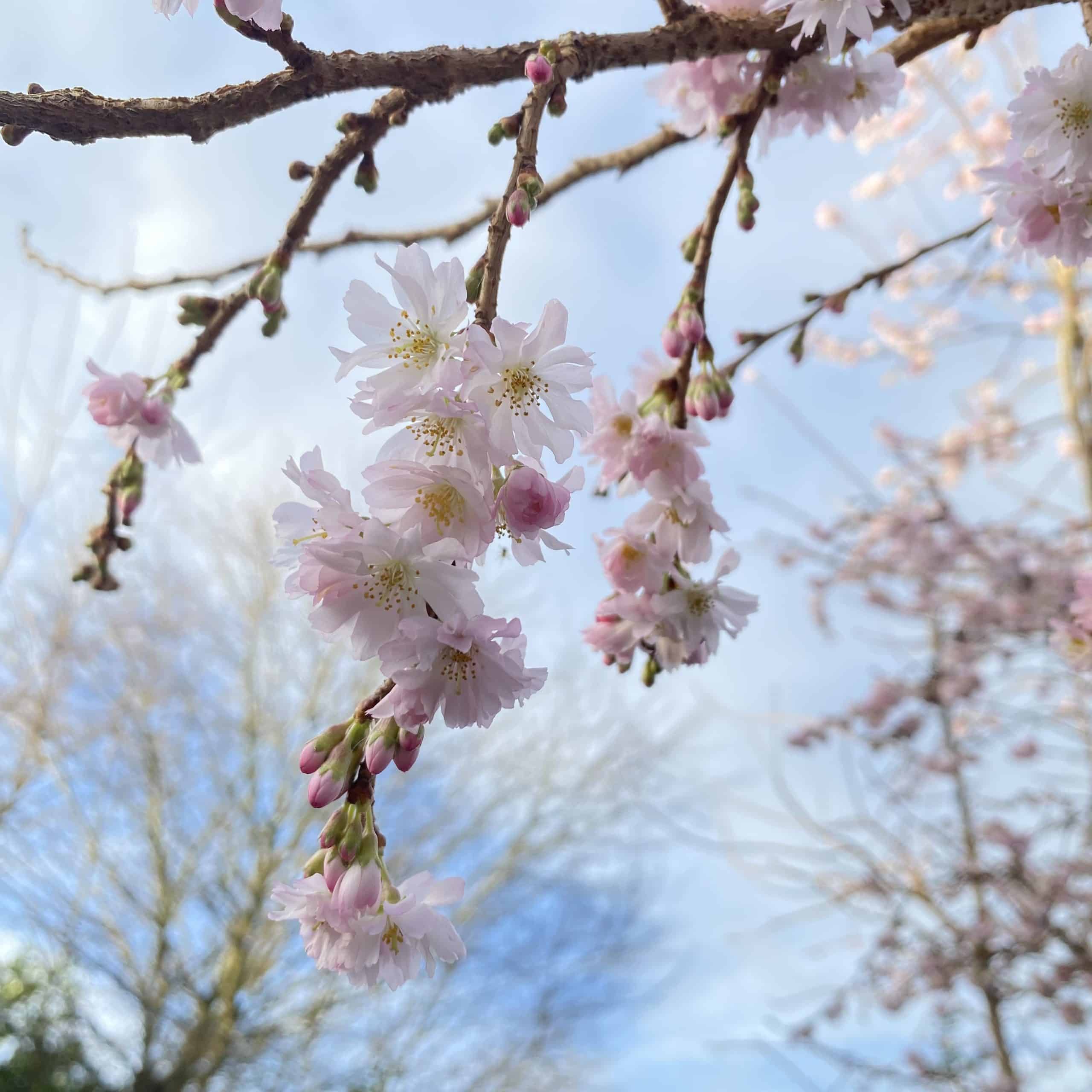
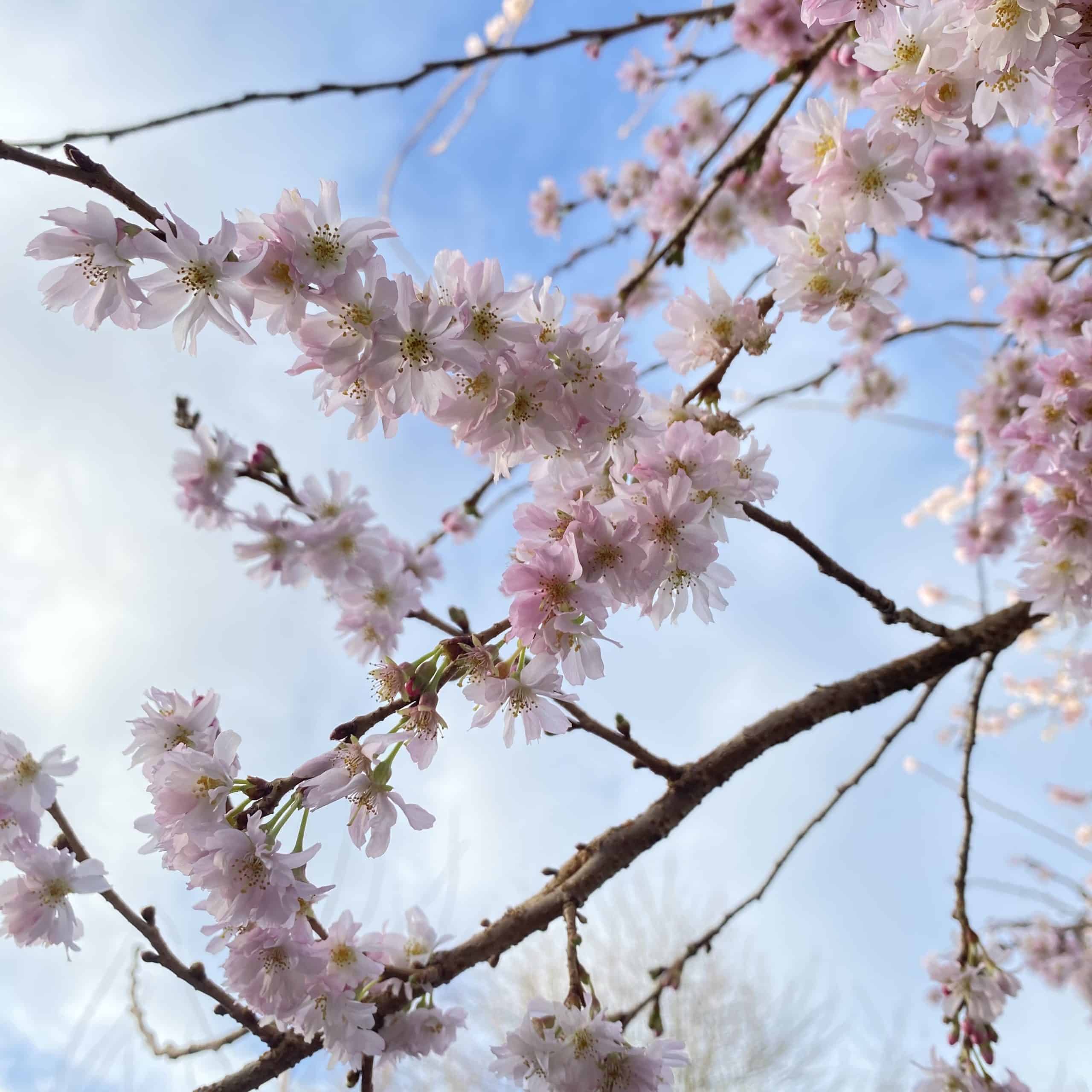
Siberian dogwood (Cornus alba ‘Sibirica’)
The Siberian dogwood is a striking ornamental shrub known for its vivid red stems that glow against the muted tones of winter. Once its leaves fall, the brilliant stems take center stage, adding bold colour and contrast to the winter landscape. It’s a popular choice for flower borders, mixed shrub beds, and informal hedging, offering year-round interest and structure. For the most vibrant colour, plant in groups and prune annually to encourage fresh, bright growth!
Himalayan birch (Betula utilis ‘Jacquemontii’)
Known for its striking, peeling white bark, the Himalayan birch is one of the UK’s most popular amenity trees. Often planted in groups for maximum visual impact, its brilliant white trunks gleam against darker backgrounds, making it a standout feature in the winter garden. Whether grown as a graceful standard or a sculptural multi-stem, this tree is great for year-round elegance and architectural interest.
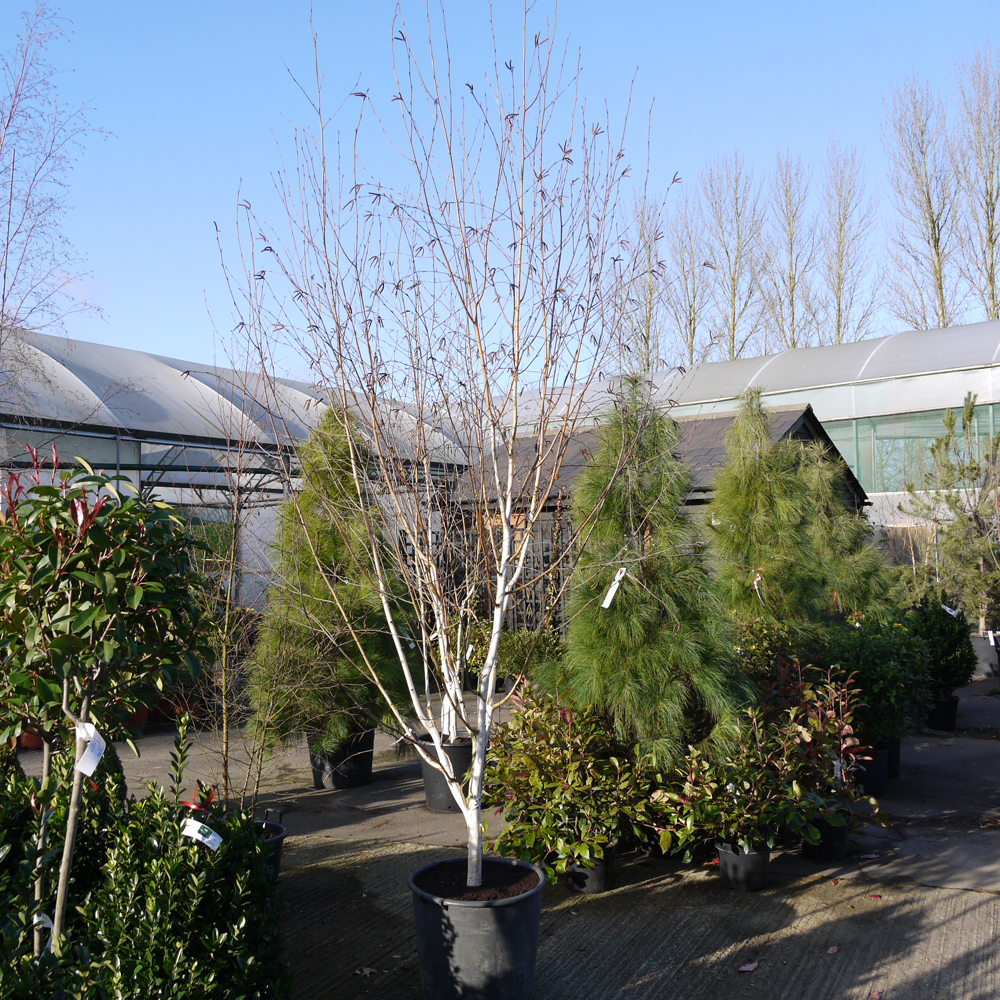
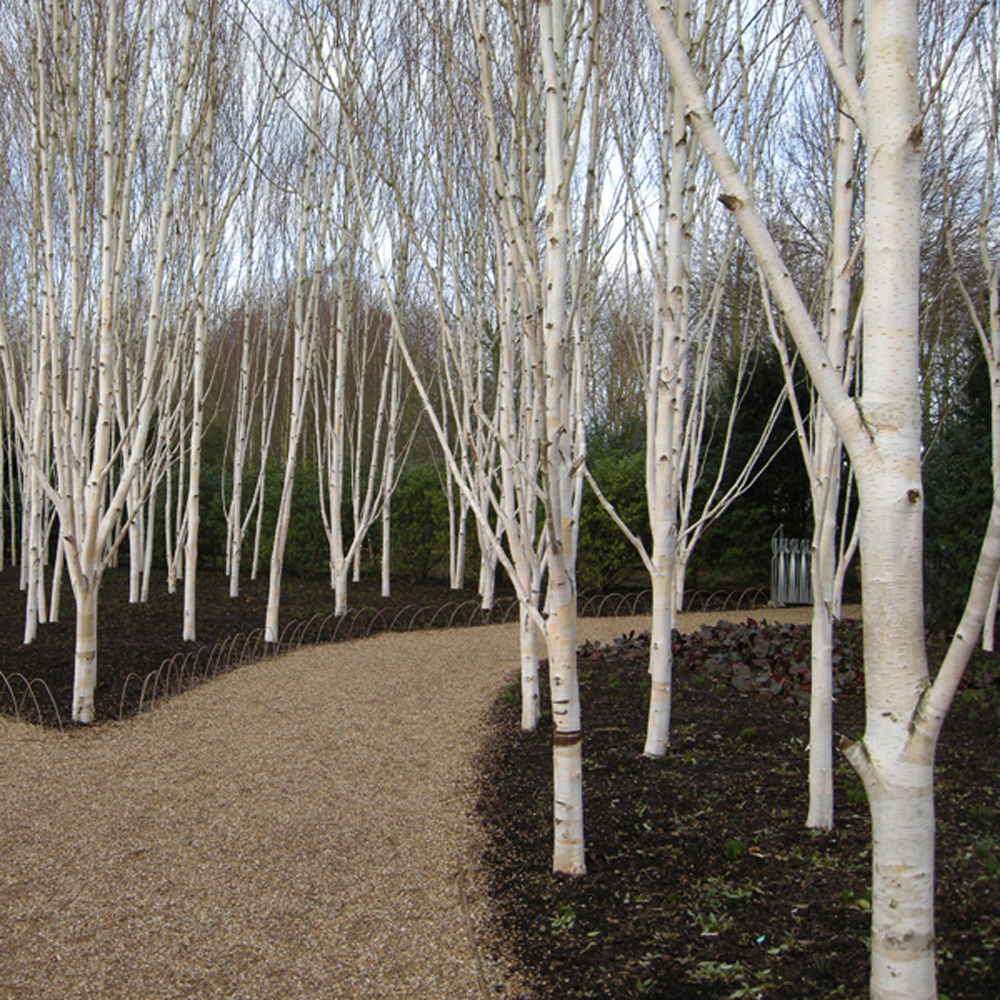
Hornbeam (Carpinus betulus)
Hornbeam is a versatile tree with bright green, ovate leaves that turn rich shades of orange and brown in autumn. Although deciduous, hornbeam often retains its dried, brown leaves well into winter, offering partial screening during the colder months. This makes it ideal for gardens where privacy is needed without overly shading ground-floor windows when light is at a premium.
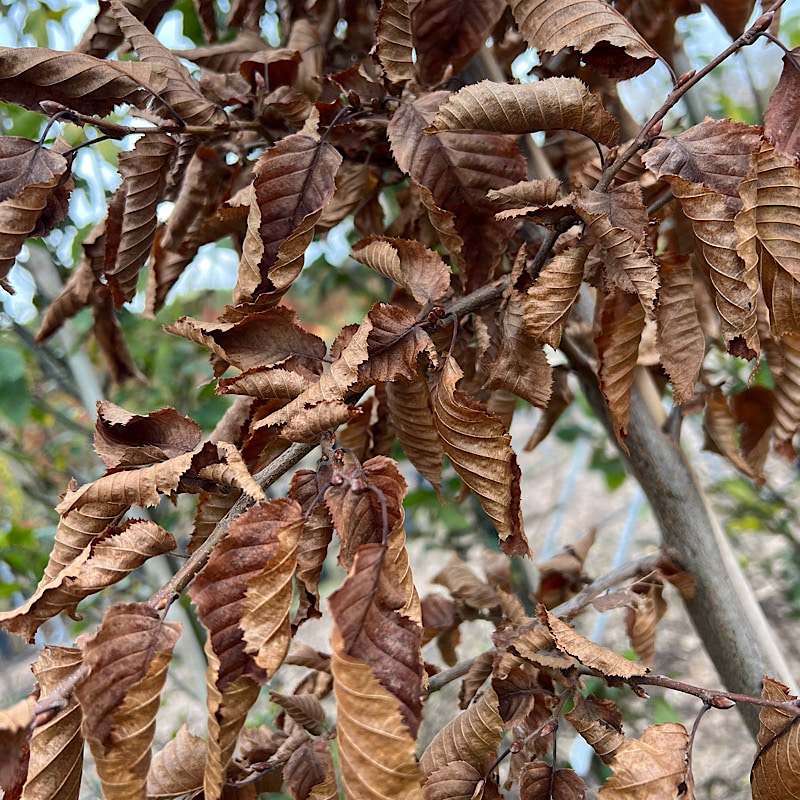
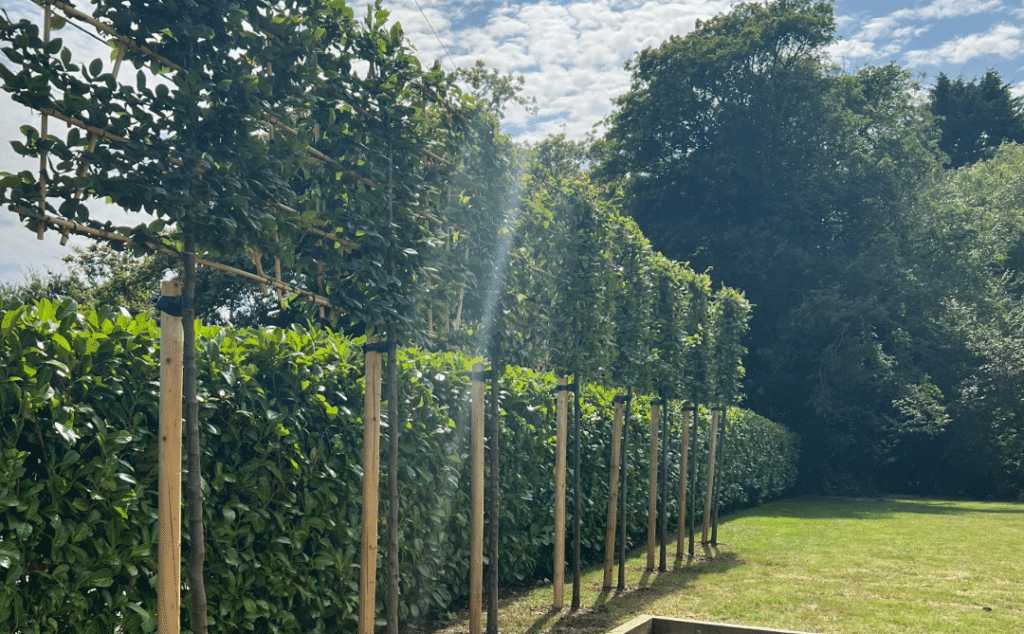
Choosing trees known for their winter interest is a great way to brighten up bare landscapes. Read part one here for more suggestion!


